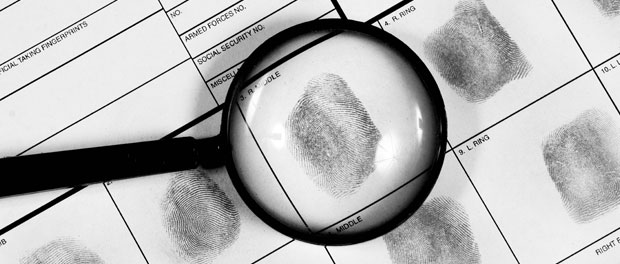
In an episode of the popular procedural drama Law and Order: Special Victims Unit, entitled ‘Perverted’, the show’s protagonist, Detective Olivia Benson, was accused of murder after her DNA was found to match DNA isolated from blood recovered from the murder weapon. Without alibi, Detective Benson was arrested, her reputation in jeopardy. As her colleagues worked to clear her name, it was medical examiner Dr. Melinda Warner who came up with the answer. Normal DNA, she explained, is about 80% methylated, but Benson’s DNA collected from the crime scene was completely unmethylated, suggesting that the so-called DNA evidence may have been fabricated and planted.
DNA methylation is the addition of a methyl group (-CH3) to the fifth carbon of a cytosine base that is present in the context of CG dinucleotides. DNA methylation plays a critical role in normal cellular processes and serves as a mechanism that turns off gene expression. Aberration in DNA methylation has long been linked to diseases such as cancer and exploited as diagnostic biomarkers, but in forensic analysis, the use of DNA methylation as a tool is still in its infancy. However, there are many advantages to using DNA methylation as a forensic tool, with one of the most important being the stability of the mark, unlike protein or RNA markers which are quickly degraded, thus allowing for quantitative analysis of older samples.
The following are examples of the application of a DNA methylation-based assay in forensic investigations:
1. Authentication of DNA samples
The most straightforward application of DNA methylation in forensic science is alluded to by SVU’s Dr. Warner who cited a real-life study by Frumkin et al. In their study, the authors isolated blood samples from a woman, centrifuged and removed the DNA-containing white blood cells. To the woman’s remaining DNA-free red blood cells, the authors added DNA that had been collected from a man and subsequently whole-genome amplified, thereby replacing the genetic material in the woman’s blood to that of the man’s [1]. Forensic analysis of the tampered blood samples failed to detect the fabrication and genotyping yielded no anomalies.
To authenticate DNA samples, the authors proposed an assay based on the fact that in vitro generated DNA is unmethylated due the inability of DNA Polymerase alone to recognize methylated cytosines, whereas in vivo generated DNA is uniquely methylated at specific genomic loci. Methylated and unmethylated cytosines can be discriminated via sodium bisulfite treatment which converts unmethylated cytosines to uracils, while methylated cytosines remain unaffected. Following subsequent PCR amplification, cloning and Sanger sequencing, the methylation status of reference loci can be determined.
2. Age prediction
Determining the age of victims and/or suspects is an important and notoriously difficult aspect of forensic investigation. The current approach relies on examination of bone and teeth structure and composition, but the result is largely imprecise. DNA methylation presents a more sensitive alternative to age prediction. Scientists have identified genomic regions whose DNA methylation pattern is age-sensitive. Using these loci, biological age could be predicted as precise as within 5 years of chronological age [3][6].
Aside from actual age, DNA methylation can also be used to determine aging rate. Deviation from normal aging rate of otherwise healthy individuals may indicate underlying health or physical conditions that may not be conclusive from regular autopsy.
3. Tissue sources and body fluid identification
Knowing the cellular origin of a DNA sample would be useful in reconstructing the crime scene. DNA methylation is highly cell-type specific and thus can be used not only to discriminate the origins of the DNA sample, but also to precisely quantify the population of various cell types within the sample [5]. For instance, when DNA is isolated from a mixture of bodily fluid, a sensitive DNA methylation analysis would be able to distinguish whether the fluid contains semen, saliva or blood, among other tissue types.
4. Differentiating monozygotic twins
The good twin and the evil twin is a popular trope used in crime shows to provide additional drama. In real life though, twins present a challenge in genotyping analysis because, despite various phenotypic differences, identical twins carry the same DNA. Many studies have shown, however, that there is significant DNA methylation variation between monozygotic twins that can be attributed to environmental differences, thus contributing to the phenotypic differences, subtle or otherwise [2][4]. In cases where identical twins are involved, DNA methylation provides an attractive alternative for positive identification. This is good news for crime fighters, but perhaps not so much for scriptwriters.
The use of DNA methylation in forensic analysis is not without its challenges. The sensitivity of the marker and detection methods are among issues that must be considered before DNA methylation can be accepted as unbiased court evidence. The science, however speaks for itself, and thus, it is not unforeseeable that eventually DNA methylation analysis would be used to complement and enhance DNA fingerprinting and other currently existing forensic technologies.
References
- Frumkin, D., Wasserstrom, A., Davidson, A., and Grafit, A. (2010). Authentication of forensic DNA samples. Forensic science international Genetics 4, 95-103.
- Gordon, L., Joo, J. E., Powell, J. E., Ollikainen, M., Novakovic, B., Li, X., Andronikos, R., Cruickshank, M. N., Conneely, K. N., Smith, A. K., et al. (2012). Neonatal DNA methylation profile in human twins is specified by a complex interplay between intrauterine environmental and genetic factors, subject to tissue-specific influence. Genome research 22, 1395-1406.
- Hannum, G., Guinney, J., Zhao, L., Zhang, L., Hughes, G., Sadda, S., Klotzle, B., Bibikova, M., Fan, J. B., Gao, Y., et al. (2013). Genome-wide methylation profiles reveal quantitative views of human aging rates. Molecular cell 49, 359-367.
- Levesque, M. L., Casey, K. F., Szyf, M., Ismaylova, E., Ly, V., Verner, M. P., Suderman, M., Brendgen, M., Vitaro, F., Dionne, G., et al. (2014). Genome-wide DNA methylation variability in adolescent monozygotic twins followed since birth. Epigenetics : official journal of the DNA Methylation Society 9, 1410-1421.
- Vidaki, A., Daniel, B., and Court, D. S. (2013). Forensic DNA methylation profiling–potential opportunities and challenges. Forensic science international Genetics 7, 499-507.
- Weidner, C. I., Lin, Q., Koch, C. M., Eisele, L., Beier, F., Ziegler, P., Bauerschlag, D. O., Jockel, K. H., Erbel, R., Muhleisen, T. W., et al. (2014). Aging of blood can be tracked by DNA methylation changes at just three CpG sites. Genome biology 15, R24.

